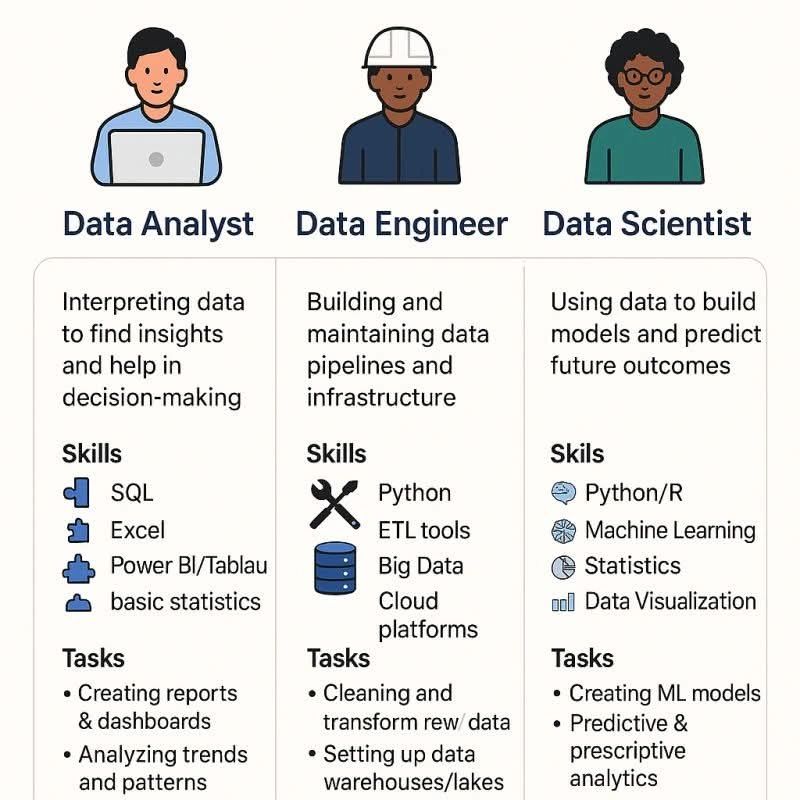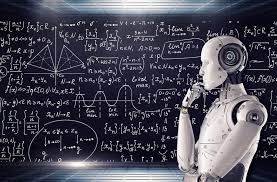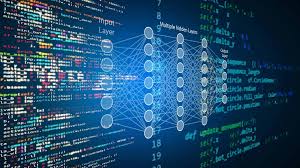
Data Analyst Interview Q&A Exclusive (2025 Guide)
Breaking into a career in data analytics requires more than technical skills—it also demands strong problem-solving, business understanding, and communication abilities. Whether you’re preparing for your first data analyst role or aiming for a senior position, interviewers test not only your technical knowledge but also your ability to apply it in real-world scenarios.
To help you succeed, we’ve compiled 50 commonly asked Data Analytics interview questions with sample answers. This guide covers SQL, statistics, data cleaning, modeling, visualization, and business applications, making it a one-stop resource for interview preparation.

1. What is the difference between Data Analysis and Data Analytics?
- Data Analysis: The process of cleaning, inspecting, and modeling data to find meaningful patterns.
- Data Analytics: A broader term that includes data collection, transformation, analysis, and predictive modeling for business strategies.
2. Explain your data cleaning process.
- Identify missing or inconsistent data.
- Handle missing values using imputation (mean, median, mode).
- Standardize formats (e.g., date and string).
- Remove duplicates and outliers.
- Validate cleaned data with business rules.

3. How do you handle missing or duplicate data?
- Missing Data: Use imputation, predictive models, or remove values depending on the case.
- Duplicate Data: Detect using key fields and remove exact or fuzzy duplicates.
4. What is a Primary Key in a database?
A primary key uniquely identifies each record in a table and ensures entity integrity.
5. Write an SQL query to find the second-highest salary.
SELECT MAX(salary)
FROM employees
WHERE salary < (SELECT MAX(salary) FROM employees);
6. Difference between INNER JOIN and LEFT JOIN.
- INNER JOIN: Returns only matching rows from both tables.
- LEFT JOIN: Returns all rows from the left table and matching rows from the right.
7. What are outliers? How do you detect them?
Outliers are extreme values that differ significantly from the rest of the dataset. Detect using boxplots, z-scores, or IQR method.

8. What is a Pivot Table?
A pivot table summarizes and aggregates data, often used in Excel and BI tools for reporting.
9. How do you validate a data model’s performance?
Use metrics like accuracy, precision, recall, RMSE, or cross-validation. Always test on unseen data.
10. Explain Hypothesis Testing with t-test and z-test.
- t-test: Used for small samples with unknown variance.
- z-test: Used for large samples with known variance.

Advanced Data Analytics Interview Questions
11. How do you explain insights to non-technical stakeholders?
Use visuals, avoid jargon, and connect findings to business impact.
12. What tools are used for Data Visualization?
Popular tools include Tableau, Power BI, Excel, Matplotlib, and Seaborn.
13. How do you optimize a slow SQL query?
Add indexes, avoid SELECT *, review execution plans, and optimize joins.
14. What is the Bias-Variance Tradeoff?
Bias is error from underfitting, variance is error from overfitting. The goal is balance.
15. What is Collaborative Filtering?
A recommendation method that predicts preferences based on user or item similarities.
16. How do you handle large datasets?
Use distributed frameworks like Apache Spark or Hadoop, and optimize queries.
17. What is Data Normalization?
Scaling features to a common range to improve algorithm performance.

18. Explain A/B Testing.
A statistical experiment where users are split into groups to compare results of two variants.
19. What is the Curse of Dimensionality?
As the number of features increases, data becomes sparse, making models harder to train.
20. What’s the role of Machine Learning in Data Analytics?
ML helps with forecasting, segmentation, and predictive insights for decision-making.
For the Latest Jobs Notifications: Click Here
Join With Us On WhatsApp: Click Here
Join With Us On LinkedIn: Click Here
Free Python Learning: Click Here
DISCLAIMER
The Recruitment Information Provided above is for Informational Purposes only. The above Information has been taken from the official site of the Organization. We do not provide any Recruitment guarantee. Recruitment is to be conducted in accordance with the company’s official recruitment process. We don’t charge any fee for providing this job Information.
FAQs on Data Analytics Interview Questions
1. What are the most common data analytics interview questions?
Common questions include SQL queries, data cleaning techniques, handling missing values, hypothesis testing, and data visualization tools.
2. How should I prepare for a data analytics interview?
Focus on SQL, statistics, Excel, and visualization tools like Tableau or Power BI. Practice case studies and improve storytelling with data.
3. What skills are required to become a data analyst in 2025?
Key skills include SQL, Python or R, data cleaning, visualization, statistics, and knowledge of cloud platforms like AWS, Azure, or BigQuery.
4. Do freshers get data analytics jobs easily?
Yes. Many IT and consulting firms hire freshers with strong problem-solving skills, knowledge of analytics tools, and a good academic background.
5. What is the difference between a data analyst and a data scientist?
A data analyst focuses on interpreting historical data, while a data scientist uses advanced ML techniques for predictions and strategic insights.
6. Which companies hire data analysts in India?
Top recruiters include Capgemini, TCS, Accenture, Deloitte, Amazon, Infosys, and emerging startups across fintech, e-commerce, and healthcare.